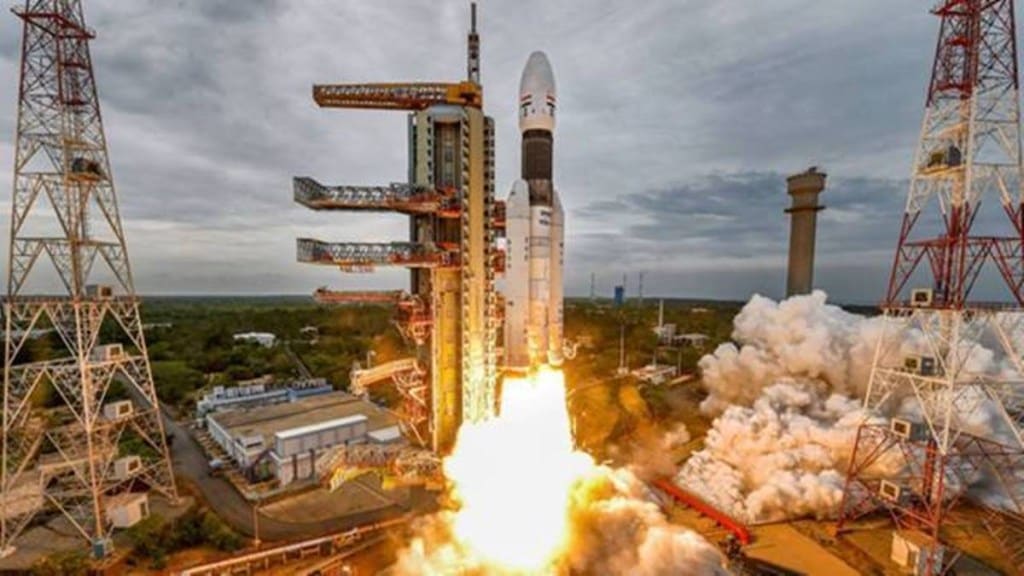India will be in charge of overseeing the next expedition to the Moon, which comes after the private Japanese mission “Hakuto-R” was unable to land successfully and after the Russian mission “Luna-25” was postponed. Chandrayaan-3 has arrived at the Sriharikota spaceport in preparation for its launch on July 14th. If everything goes according to plan, India will become the fourth nation to land on the Moon, following in the footsteps of the United States of Russia, the United States of America, and China.
“Chandrayan-3,” an Indian spacecraft that includes both a lander and a rover, is to be launched by the “LVM-3” rocket. The first goal of the mission is to achieve a lunar orbit that is one hundred kilometres in altitude. From this vantage point, an instrument known as SHAPE (which is an acronym for Spectro-polarimetry of Habitable Planet Earth) will be used to do research on the planet Earth.
Landing on the Moon is still the primary goal, despite the fact that there are plans to conduct a scientific mission from orbit around the Moon. The month of September 2019 marked India’s first attempt to land a spacecraft on the Moon successfully. The descent platform known as “Vikram” was tasked with carrying out this job. It then successfully started its descent after separating from the Chandrayaan-2 orbital module. However, the braking engine failed due to a software glitch when the platform was just a few kilometres above the lunar surface. As a direct result, Vikram Lander was unsuccessful.
After this setback, ISRO (Indian Space Research Organisation) made the decision to attempt the lunar landing once again with the Chandrayaan-3 mission. The new spacecraft has a descent platform and a lunar rover, in contrast to its forerunner, which had a number of different components. It is required to work for a total of fourteen days in the polar area of the Moon. The Chandrayaan-2 orbital module, which is currently operating normally in the selenocentric orbit, will be used to retransmit the data that is obtained
Why is it difficult to land on the Moon?
More than a third of the missions that were sent to the Moon to land on its surface failed. India was about to become the fourth nation to successfully and gently touch down on the lunar regolith at a spot that no other nation had ever reached.
The disastrous landing sequence was reminiscent of an incident that took place earlier in the same year when the Israeli private ship Bereshit collided with our natural satellite.
“All of this serves as a timely reminder that, despite the fact that humans successfully landed many times on the Moon during the Apollo missions more than half a century ago, the problem is still extremely complicated and risky,” says Srimathy Kesan founder and CEO Space Kidz India.
Kesan said that there is no single reason why previous attempts to land on the Moon have failed. In order to land successfully, a large number of events must happen in the correct order. There is no margin for error when the probe is traveling at a high speed near the landing site.
On Earth, engineers can rely on GPS to assist in the operation of autonomous vehicles, but on other celestial bodies, such systems do not exist. It’s difficult no matter who you are or what you’re attempting to do when you’re travelling quickly and must brake in a vacuum with very little information.
NASA is developing instruments that can be transported on the lander to scan the area for rocks, craters, and other obstacles and make landing course adjustments. During the Apollo era, human vision and reflexes contributed to successful landings. Neil Armstrong famously took control of the Apollo 11 lander after discovering rocky terrain at the intended landing site and flew off in search of a safer landing site.
China’s Chang’e-4 spacecraft, which landed on a lunar slope and deployed the Yutu-2 rover, provides some solace to those concerned about the difficulty of a Moon landing.
Why is ISRO so confident?
Sharing view with Financial Express Online, Pawan Kumar Chandana, Co-founder and CEO of Skyroot Aerospace says, “The confidence is very high now for Chandrayaan 3 success as it is very similar to Chandrayaan 2 mission in 2019.”
According to Chandna, “Chandrayaan 2 was very close to soft landing except a small glitch in the last few seconds which was clearly pinpointed and duly addressed in Chandrayaan 3 spacecraft from what we know.”
However, “Space is hard and landing on the moon is one of the hardest- so we have to wait with bated breath until soft landing happens in August and cheer for the mission as billion Indians,” Chandna says.
“The Indian space agency asserts that this time everything has been refined, and every precaution has been taken to prevent another failure,” says Girish Linganna, a Bangalore based Space Expert.
During the course of the research, a good amount of data was gathered, according to Linganna. “At the same time, ISRO took a more cautious approach this time around, choosing to run as many tests as they could in order to improve the likelihood that they would eventually be successful,” he said.
The stationary lander is equipped with a Langmuir probe for analysing the Moon’s plasma environment, an instrument for measuring the thermal conductivity of the lunar soil, and a seismometer. A passive NASA instrument, a laser reflector comparable to those mounted on the lunar surface by Apollo astronauts, has also been uploaded.
The rover is equipped with an instrument for atomic emission spectroscopy and a spectrometer for investigating the mineralogy of lunar rocks.

